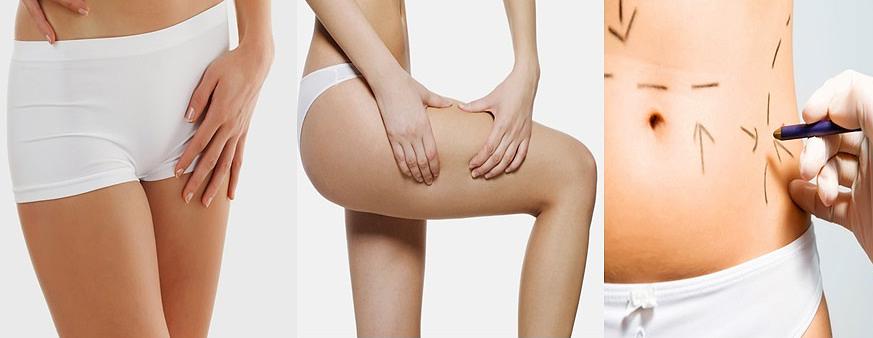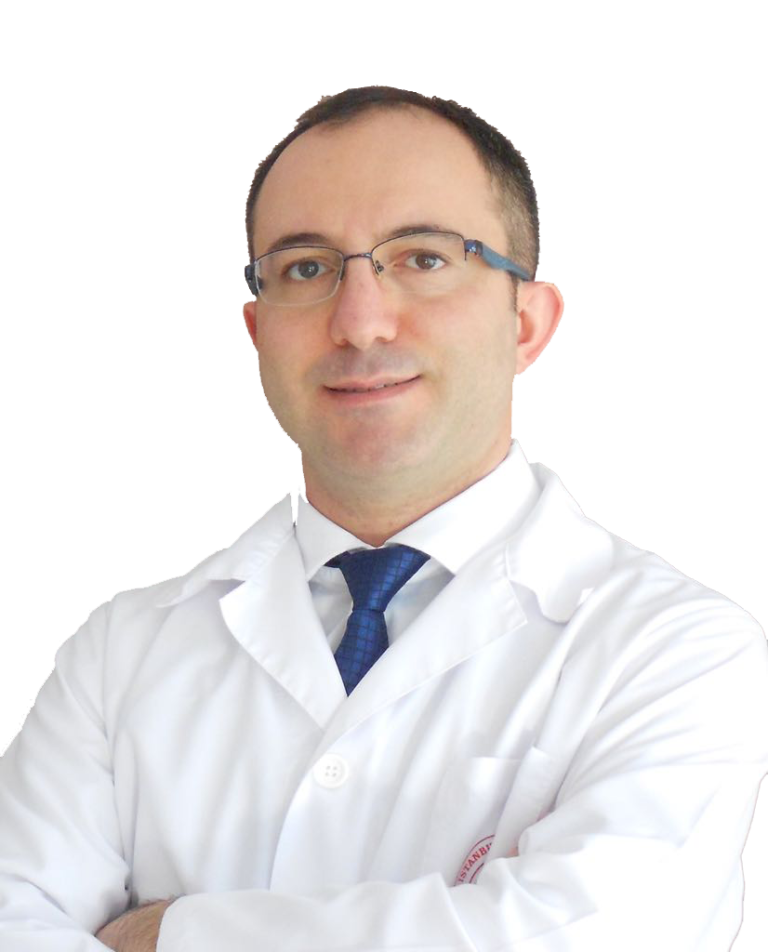It is the process of removing excess fat tissues under the skin by inserting them under the skin through small holes with the help of a thin metal cannula. Cannula selection is made according to the area where liposuction will be applied and the amount of fat to be removed. The cannulas used for this procedure are 2 mm - 5 mm in diameter, 10 cm - 45 cm in length. The cannulas are connected to a device that applies varying degrees of vacuum through a transparent hose. Removing fat tissues from an area not only helps to remove the excess in that area, but also reduces the fat storage capacity of that area in later periods. The reason for this is that the fats in the region are taken together with the chambers that store those fats, so that the number of chambers (fat cells) in that region is clearly reduced. The number of cells does not increase over time. The areas where liposuction is applied frequently are seen in the animations. If the skin on the front of the abdomen is loose and saggy, the skin may become more saggy after liposuction, and in this case, tummy tuck "abdominolasti" should be applied together with liposuction.
The surgical procedure is performed under general anesthesia or spinal anesthesia in a fully equipped hospital. This plastic surgery is completed in between 1 hour and 2 hours.

WHAT ARE THE SURGERY STAGES?
Pre-Operation
* Do not take aspirin and equivalent drugs for 15 days before and 15 days after surgery. If necessary, use other pain relievers. Aspirin intake may cause excessive blood loss during the operation and spontaneous bleeding after the operation.
* Stop eating and drinking six hours before the procedure.
* Inform your doctor if you have flu, cold, cough, fever, weakness, etc. Your surgery may need to be postponed.
* Your menstruation may not require the postponement of your surgery. But it would be useful to inform your doctor.
After Surgery
* At the end of the surgery, you will be dressed in a corset. Your corset is designed to meet your toilet needs without being removed. Do not remove the corset for the first 4 days unless it is necessary.
* Painkillers for your pain will be applied as soon as you wake up from the surgery and will continue in the next period. After this surgery, not much pain is expected.
* Your pain will be more when changing positions or in contact. After a few days, you will not have any pain that requires taking painkillers.
* Nausea and vomiting may occur. If necessary, ask the health personnel for a container for this. If it is irritating, medication is applied to prevent nausea.
* Chewing hard foods may damage your nose. After 15 days, you can switch to normal food. rough is recommended. Getting up uncontrollably in the early period may result in a fall due to sudden blackout. While feeling good, after sitting for a while, stand up with the help of someone who enters your arm.
* Blood leakage is expected for a while from the mini incisions where liposuction cannulas are inserted and fat is removed. Sometimes the blood that has accumulated inside will suddenly find its way out. Do not interpret this situation as 'sudden bleeding' at that moment, it is normal, do not panic. There is absolutely no sudden and profuse bleeding after this surgery. The gauze or pads placed on mini incisions in the corset will be changed as they become dirty, so that the leakage that will be cut off in a few days by gradually decreasing will be mostly in the first hours and will not contaminate the corset and the surrounding area. In the first periods, your doctor or nurse will do this by yourself or a relative when you go home.
* After the fourth day, it is recommended to wash the corset and take a standing shower. After the corset is washed in warm water and dried by laying, wear the corset again. It is recommended to wash the corset as needed and wear it day and night for a month. Large body, excessive fat removal, swelling and stiffness may prolong the wearing time of the corset for a while (15 days-1 month). These stitches will be removed in 5-7 days. Varying degrees of decay (bruising) are expected in the areas where fat is removed. These bruises fade over time and disappear after 15 days.
* Swelling (edema) is expected in the areas where fat is removed. Widespread edema, which begins to decrease at the end of a week, may be replaced by regional stiffness. It may take a few months for these to pass and the skin to regain its natural softness, and wearing a corset is helpful in accelerating the recovery of this condition.
* Although there is a clear difference after 15-20 days after fat removal, at least 3 months are needed for the swelling to settle and for full recovery.
* Depending on the extent of the procedure, patients can return to their daily physical activities and work after 1 or 2 weeks, provided that they are wearing a corset.
